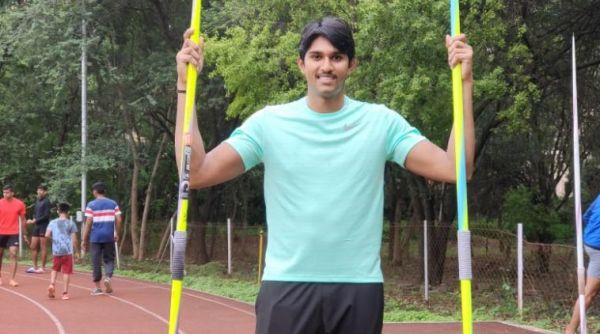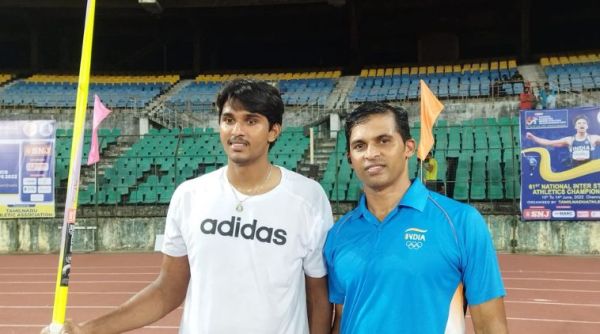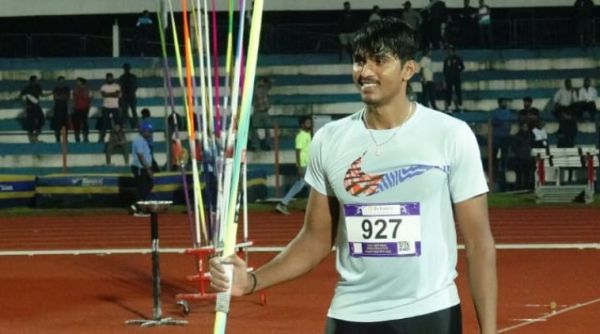Manu DP vividly remembers the day his initiation into the sport of javelin happened about six years ago. His school’s physical education teacher placed a bamboo spear, a discus, and a shotput ball in front of him and pointed his finger towards the javelin. The then 16-year-old had no clue about the sport. Call it discipline, respect or just plain fear, the budding volleyball player decided to pursue javelin wholeheartedly from that moment onwards. “Sir asked me, so I did it,” he puts it simply.
AUS vs SA: Spidercam operator at MCG stood down for remainder of Boxing Day Test
“When I made my first throw and saw the spear flying, I knew this is exactly what I wanted to do. I cannot explain the feeling you get when the javelin leaves your arm and takes flight,” the 22-year-old says with excitement evident in his tone.
It is, perhaps, a mixture of passion and discipline that has helped Manu climb the ladders rapidly to become one of the best up-and-coming throwers in the country. Ending 2021 with a personal best throw of 76m, Manu has taken a giant leap in 2002 – his breakthrough year. He has ended the season with 84.35m – the second-best attempt by an Indian this year just behind reigning Olympic champion Neeraj Chopra (89.94m). He breached the 80m mark in at least five out of the nine competitions he took part in in 2022 and finished on the podium eight times proving his consistency. This year also marked his first international meet, the Birmingham Commonwealth Games, where he finished a respectable fifth with a best attempt of 82.28m.
Cold Play at Kotla: Tamil Nadu Ranji Trophy cricketers weather Delhi winter – in monkey caps
Manu DP while training.
But, by his own admission, behind his remarkable rise and consistency is a strict coach who has worked with several top Indian throwers like Annu Rani and Neeraj Chopra. Kashinath Naik, a 2010 CWG bronze medallist himself, isn’t an easy coach to please. Known for his gruelling drills, strict curbs on phone usage, and no holidays policy, only the toughest survive under him.
“When Manu had arrived here (Army Sports Institute, Pune) he was in the 65m range but I took him because he had good height, explosiveness and good body coordination. Technique is something that can be worked on but to find someone with inherent qualities of a good thrower is tough,” Kashinath tells The Indian Express.
नशा दवाइयों से नहीं बल्कि दिल के निश्चय से छूटता है: एसडीएम सत्यवान मान
 Manu DP with Javelin sticks.
Manu DP with Javelin sticks.
Coach Kashinath receives at least half a dozen videos from young throwers across the country requesting him for a trial at the Army Institute but time and other resources do not permit it. “I only call people who I find potential in.” As per the norm, the ASI doesn’t recruit throwers below the 70m mark, but on Kashinath’s insistence, an exception was made.
“My commander asked me why do I want to recruit a 65m range athlete but I asked them to give me some time. I sent him practice videos even before he arrived for the trials here and made some tweaks to his throw,” says Kashinath.
Even before the official trial happened, Kashinath found a major flaw in his technique – the angle of release. The optimum angle for release in javelin throwing is believed to be between 33 to 37 degrees but Manu’s release angle was close to 40m which meant his throws went higher rather than further. “Woh aasman ko chu raha tha (He was touching the skies), jokes coach Kashinath. Just a minor tweak to his angle resulted in an extra 3-4 metres in the final Army trial that earned him a place in the institute and eventually the post of a havildar.
स्नैपड्रैगन 8 जेन 2 चिपसेट के साथ नूबिया रेडमैजिक 8 प्रो सीरीज गेमिंग फोन लॉन्च: मूल्य, विशेषताएं
Manu is very pleased with the facilities at the ASI and after his CWG appearance he has also been included in the TOPS scheme. The only challenge he faces at the ASI is language. “Nobody speaks Kannada here but that is good, I have picked up Hindi. No one in my family speaks Hindi,” he says.
Things would have been very different had Manu not made it to ASI. It was his final year of college and his family needed him back in their village in the Hassan district of Karnataka to work in the fields and support them. “I am not kidding, even if one more year had progressed without getting proper guidance, I would have quit the sport and gone back. My future would have been working in the fields. Nobody would have known me today,” he says.
Makeshift development
Those were testing times for young Manu who was desperately seeking a coach or mentor to help him progress to the next level. His school physical education did his part but there wasn’t a specialised throwing coach. At college, he had to make do with the sprints coach who could offer him little guidance. The Southern belt, unlike the Haryana-Punjab region, isn’t a hotbed for throwing talent. Even if there are a handful who show potential, finding a throws coach is a big task.
“Throughout my school and college, I practised on my own. My school gave me three periods every day to practice and I would train alone. I did not have the resources to get a professional javelin so I used bamboo initially. Uss se bahut maar khaya hai (I have been whipped by it on so many occasions),” he says. It is important to clarify here that when Manu talks about being whipped, he is referring to the bruises the tail end of the bamboo spear causes on the shoulder while throwing.
 Manu DP with his coach.
Manu DP with his coach.
“Bamboo javelins have this tendency to bend at the point of release and whip you on the back, neck and shoulders. I still have bruises that I can show you,” he says.
Manu still couldn’t afford a javelin, and bamboo was literally becoming a pain in the neck for the teenager. One day, while working in the family fields, an idea struck him. He was using a spear-like iron rod to dig holes for saplings. “I thought why not use it as javelin for training,” he says. However, while a standard javelin, designed keeping in mind the principles of aerodynamics, weighs around 800g, the solid digging device weighs nothing less than eight kilograms.
Manu had a logic. Although it may be debatable, it served him well. “The idea was simple, If I can throw a rod that weighs, so much it would be easier for me to throw javelins. I used to make at least 50 throws a day with the rod during my school days,” he says. It was also a funny sight, he recalls, as most athletes would return their training equipment to the sports store room while Manu had to return his implement to the school gardener.
Didn’t feel pressure of replacing Kuldeep, domestic grind helped me perform: Jaydev Unadkat
 Manu DP after a Javelin throw game.
Manu DP after a Javelin throw game.
Manu firmly believes the natural talent that coach Kashinath spotted in him was due to the countless hours he slogged with the rod and his work in the fields. “The explosiveness and power in my back is definitely a result of working in the fields. You have to stand for hours in the sun and dig the soil. It was back-breaking work but it strengthened my core muscles and that is why I can take heavy load during training even now,” says Manu.
Both Manu and coach Kashinath, however, knew raw talent and power would not be enough to compete at the next level. So, Kashinath’s focus was on systematic training with a lot of focus on diet and rest. “Manu is very dedicated and disciplined. There are some kids who give their 60-70 per cent during training but he gives it everything every time. He stays away from the phone, follows our meal plans, and has never asked for a holiday since joining in 2019,” he says. Manu’s diet and training have been tweaked a little in the last couple of weeks with a focus on adding more muscle mass.
“We are focussing on the Asian Games and targeting throws in the 88m region. His technique has improved fairly but he needs more muscles to pull off those big throws,” says coach Kashinath. The biggest learning for young Manu is learning to believe in himself.
“I think confidence was one weak area we addressed this season. During the Federation Cup in April, he had a series of bad throws at the start and almost gave up. But I told him the competition is not over until you make your last throw. He hit close to 80m in the final attempt and won silver. That changed his outlook,” he says.
.